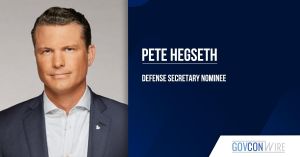The 29th United Nations Climate Change Conference, known as COP29, took place recently in Baku, Azerbaijan, from November 10 to 24, 2024. This pivotal summit attracted over 55,000 participants, encompassing leaders, environmentalists, and climate negotiators from around the globe, all convening with the hope to bolster efforts to combat climate change.
After two weeks of intense negotiations, the much-anticipated outcomes left many participants feeling disappointed and frustrated. At the heart of the discussions was the issue of climate finance, particularly the assistance provided by wealthier nations to support developing countries grappling with the adverse effects of climate change.
One of the significant results was the pledge from wealthy nations to increase climate financing to $300 billion annually by 2035, up from the previous commitment of $100 billion. This well-publicized figure, though, drew sharp criticism for being insufficient. Developing countries, already dealing with the impacts of climate change, had been advocating for as much as $1.3 trillion annually by 2030 to adequately transition to renewable energy and adapt to the increasingly severe climate impacts.
Despite the elevated pledge, representatives from developing nations expressed concerns about being pressured to accept what they described as inadequate funding. Chandni Raina, representing the Indian delegation, did not mince words when she characterized the agreement as “an optical illusion,” emphasizing the pressing needs of climate-vulnerable countries.
Experts have echoed this sentiment. A study conducted by the United Nations Framework Convention on Climate Change highlighted the urgent requirement for approximately $5.8 trillion by 2030 for developing nations to effectively combat climate change repercussions, paving the way for significant doubts surrounding the viability and sufficiency of the recently announced financial commitments. "$300 billion does not address the needs and priorities of developing countries," Raina remarked during the closing session of the summit.
Another noteworthy aspect of COP29 was the operationalization of the Loss and Damage Fund, which was originally established at COP27. This fund aims to assist vulnerable nations facing economic and non-economic losses due to climate disasters. Currently, the fund has secured commitments exceeding $730 million, yet the distribution of these funds is expected to begin only in early 2025.
The Canadian government recently pledged $50 million to the Loss and Damage Fund, a small yet meaningful gesture highlighting the importance of climate solidarity amid rising disaster costs experienced by developing countries, which can range from $100 to $500 billion annually due to climate-related damages.
Adding more complexity to the negotiations, COP29 also saw a renewed focus on carbon markets, with negotiators approving Article 6.4 of the Paris Agreement. This agreement lays the groundwork for establishing centralized carbon market standards and acknowledged the pivotal role of collaboration among nations and private sector companies to reduce their carbon footprints. Article 6.4 is anticipated to aid countries in implementing their climate plans more efficiently and affordably, thereby promoting sustainable development.
Frustrations were not solely confined to the financial commitments and initiatives discussed at the summit. The atmosphere of the negotiations was tense, especially as the conference went hours past its intended close time on November 22, straying far from the scheduled end. Participants were left scurrying about the venue, some pulling their suitcases as the discussions dragged on during late-night hours.
Notably, the conference faced criticism not only for the agreements reached but also for the participation of various nations. Argentina withdrew its representatives after President Javier Milei spoke with U.S. President-elect Donald Trump, raising concerns due to Milei’s already established disdain for climate action. France also decided to boycott COP29, highlighting tensions after Azerbaijan's allegations of suppressing environmental protests within its territories.
Critics remarked on the apparent lack of ambition and inadequate frameworks devised to actually facilitate the needed changes globally. Key players, including the United States, faced scrutiny for maintaining what many perceived as coercive diplomatic tactics without offering substantial solutions or support to developing nations. Victor Menotti from the Global Campaign to Demand Climate Justice pointed to the “my way or the highway” approach, asserting there’s plenty more needed from the U.S. to truly support communities suffering the worst impacts of climate change.
Many advocates and representatives of vulnerable nations experienced feelings of cynicism and hopelessness. Tina Stege, climate envoy of the Marshall Islands, voiced her frustrations at the negligible outcome: “We are leaving with only the smallest portion of funding needed urgently.” She expressed deep concern over the ramifications climate strategies are having on the world’s most vulnerable, stating: “Countries seem to have forgotten the reason why we are all here. It is to save lives.” The urgency for expedited climate aid was starkly underscored by recent catastrophic events, as the Philippines faced unprecedented storms resulting in significant casualties during the COP29 discussions.
Looking forward, leaders attending COP29 left with mixed feelings about progress made against the backdrop of urgent and dire climate realities. Discussions surrounding financial commitments, operationalized carbon markets, and the long-awaited funds for loss and damage exemplify the complex nature of climate negotiation, which often seems to reach toward hope yet falls short of fulfilling the needs of those most at risk from climate change.
Mary Lyons, Ojibwe elder and environmental advocate, encapsulated the sentiment of many nagging at the heart of COP29. She emphasized the need for humanity to redefine its relationship with the planet, reiteratimg, "We all have one address. It’s called Mother Earth. We cannot continue playing games with the lives of the world’s most vulnerable people. It's time we stand united because we are all interconnected. Our survival depends on it.”



